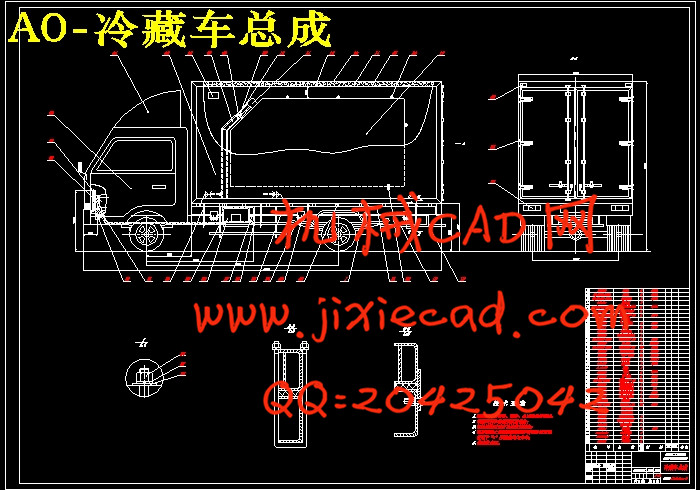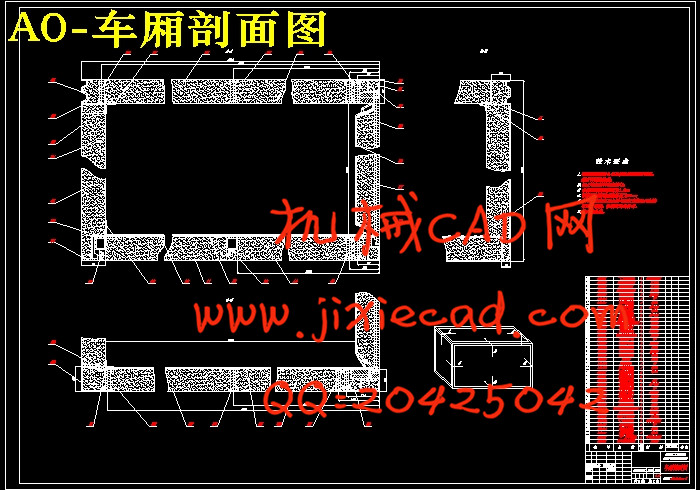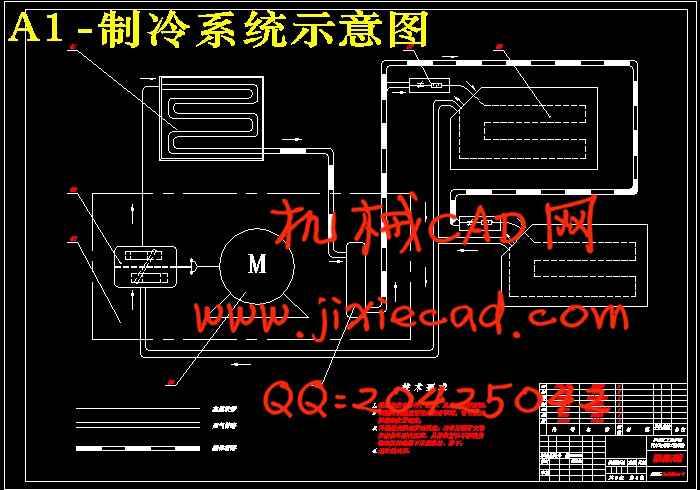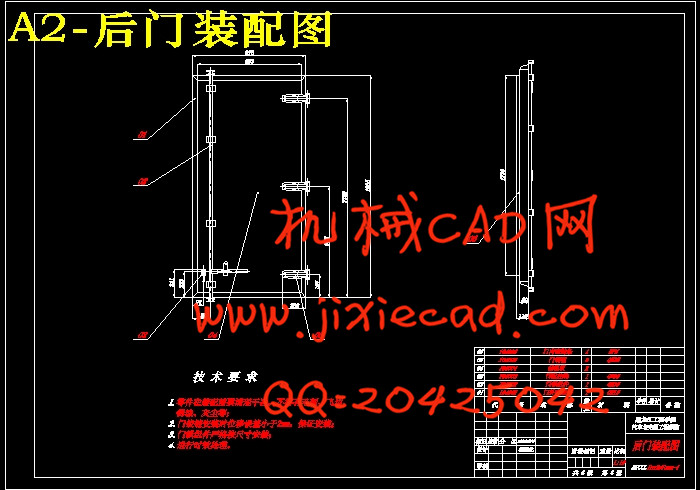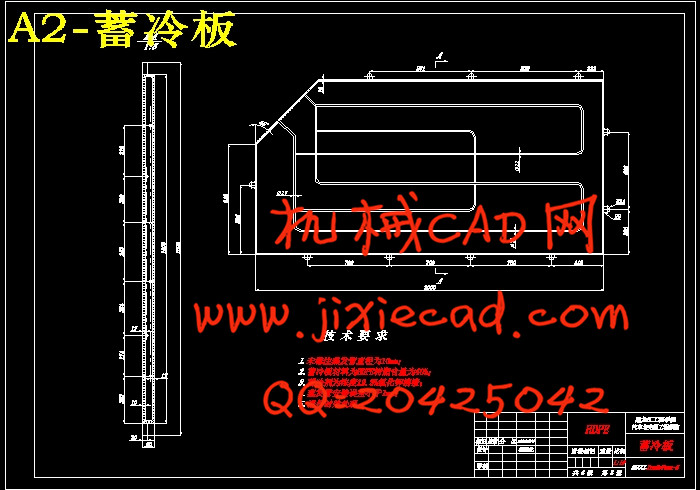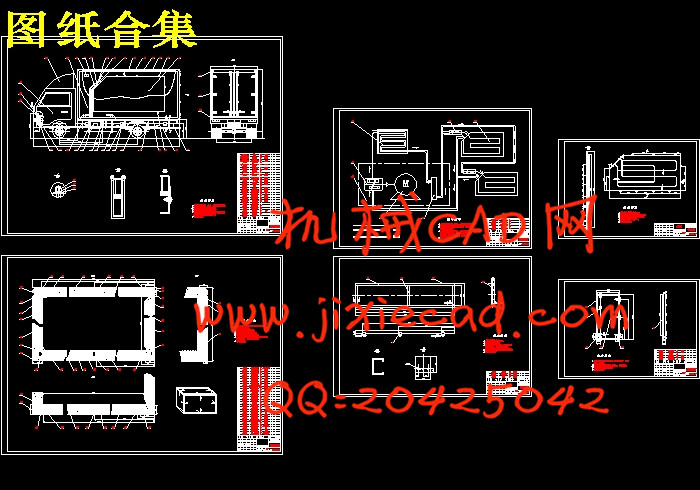设计简介
摘 要
本次设计的题目是江淮冷藏车改装设计。冷藏汽车是采用隔热车厢为保温装置,并利用不同的制冷装置,从一定程度上实现各种易腐货物的运输。
在查阅相关资料,分析对比了国内外冷藏车发展现状。从而提出了这个设计的目的和意义,同时开展毕业设计的内容。
本次设计中主要针对冷藏车的特点进行了整车总体布置的设计、二类底盘的选择、隔热车厢的设计、制冷系统设计、副车架设计以及整车性能进行了设计与计算。在各部分设计计算中,首先介绍原理分析对比后进行理论计算和校核,依照选用为先原则进行设计。本次设计最终选定隔热车厢填充材料为硬质聚氨酯、制冷方式为非独立式冷板制冷、整车性能优秀。
通过理论计算本设计中的冷藏车性能优秀,各项性能都能达到国家标准。在理论上本设计是可行的.
关键词:改装设计;冷藏汽车;隔热车厢;制冷系统;整车性能
ABSTRACT
The topic of this design is the modification design of Jianghuai refrigerated automobiles. Refrigerated automobile is used heat insulation carriage as insulation device, makes use of different cooling device, therefore, implementes perishable goods on transportation from a certain degree .
After consulting relevant information, analyzing the contrast of the development status of refrigerator automobiles at home and abroad, I put forward the purpose and significance of this design ,at the meanwhile,develop the content of this graduation design.
This design conducts the design of the overall layout of vehicle the design of the choice of second type chassis and insulation carriage,the design of refrigerating system and subframe, carrys on the design and calculation of all the vehicle performance ,based on the features of refrigerated automobile.In various parts of the design calculations, firstly, I introduce the principle,after comparison,conduct theoretical anlysis calculations and check, in accordance with the principle of selection for the first design.The design of the final selection of cars fill with insulation material for rigid polyurethane,and non-stand-alone refrigeration as cold plate refrigeration, so that vehicle performances excellent.
From the theoretical calculation of the design ,the refrigerated automobile is in the good performance,and it achieves to the national standard. In theory, the design is feasible.
Keyn words: Design Modification; Refrigerating Automobile; Insulation Carriage; Refrigeration System; Vehicle Performance
目 录
摘要 I
Abstract II
第1章 绪论 1
1.1 我国冷藏保温汽车的现状 1
1.1.1 我国冷藏保温汽车的发展现状 1
1.1.2 我国冷藏保温汽车的生产现状 2
1.1.3 我国冷藏保温汽车制冷装置的技术现状 3
1.1.4 我国冷藏保温汽车隔热厢体技术发展现状 4
1.2 国外冷藏车发展现状 4
1.3 设计主要内容 4
第2章 方案分析及总布置设计 6
2.1 各制冷方式的原理简介 6
2.2 各种制冷方式的优、缺点对比 7
2.3 制冷方式的综合分析 8
2.4 总布置的设计 8
2.5 本章小结 9
第3章 二类底盘选择 10
3.1 二类底盘选择原则 10
3.2 设计参数 11
3.3 底盘主要参数 11
3.4 功率平衡和比功率的计算 11
3.4.1 功率平衡计算 11
3.4.2 比功率计算 12
3.5 本章小结 13
第4章 隔热车厢设计 14
4.1 隔热货厢的结构特点对比 14
4.1.1 隔热货厢的分类 14
4.1.2 隔热货箱结构特点的对比 14
4.2 隔热货厢的设计及选择 15
4.3 隔热车厢容积及尺寸设计 16
4.3.1 隔热车厢外轮廓尺寸设计 16
4.3.2 隔热车厢内框尺寸 16
4.4 车门及附件的设计 17
4.4.1 车厢门形式的选择 17
4.4.2 附件介绍 17
4.5 本章小结 18
第5章 制冷系统设计 19
5.1 制冷系统的设计 19
5.1.1 制冷系统简介 19
5.1.2 制冷装置的选择 20
5.2 隔热车厢热工计算 20
5.3 热负荷计算 23
5.4 冷板设计 24
5.4.1蓄冷剂的选择 24
5.4.2冷板保温时间计算 25
5.4.3充冷时间计算 25
5.4.4冷板安装强度校核 25
5.5 本章小结 25
第6章 副车架设计 27
6.1 主车架的改装 27
6.2 副车架的截面形状及尺寸 28
6.3 副车架前端形状及安装位置 28
6.4 副车架与主车架的连接 29
6.5 本章小结 29
第7章 整车性能计算 30
7.1 动力性计算 30
7.2 经济性计算 33
7.3 稳定性计算 34
7.4 本章小结 37
结论 38
参考文献 39
致谢 41


